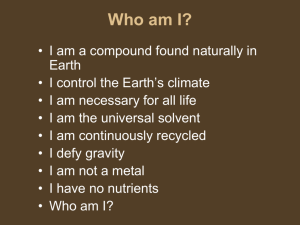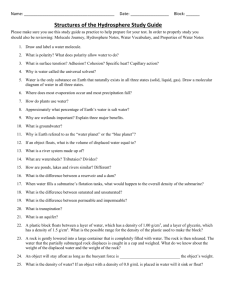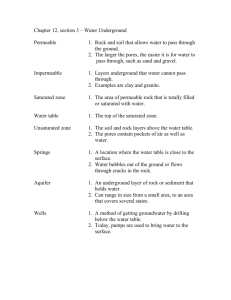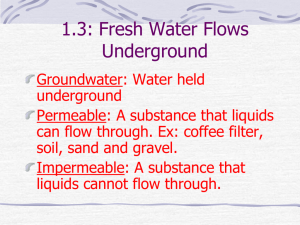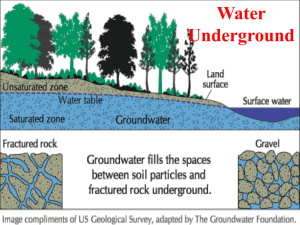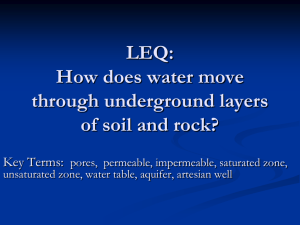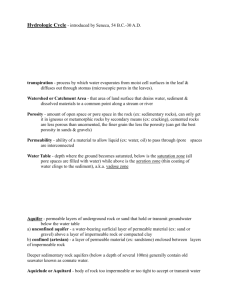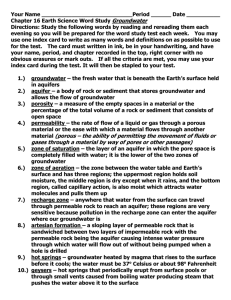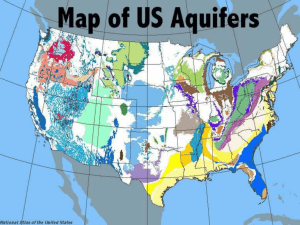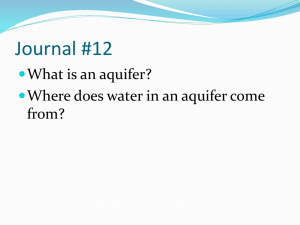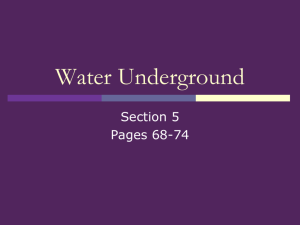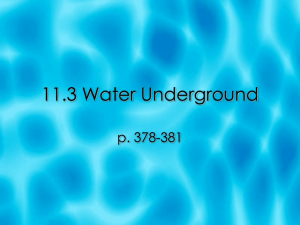Underground Layers
advertisement
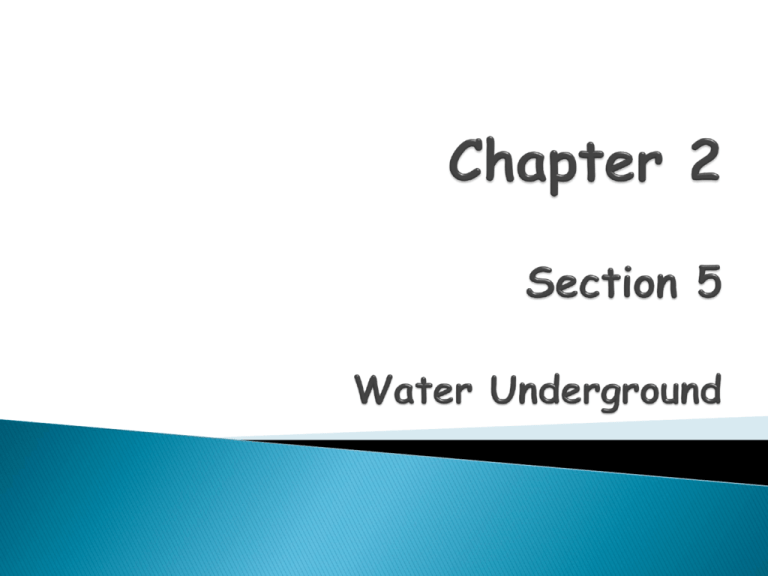
Just like rivers and lakes, groundwater comes from precipitation. Water underground trickles down between particles of soil and through cracks and spaces in layers of rock. Different types of rock and soil have different-sized spaces, or pores, between their particles. Materials that allow water to easily pass through their pores are called permeable. EXAMPLE: sand and gravel. Eventually the water will soak down to layers it cannot go through. Materials that water cannot pass through easily are called impermeable. EXAMPLE: clay and granite. Once water reaches an impermeable layer, it’s trapped and begins to fill up the spaces above the impermeable layer. The area of permeable rock or soil that is totally filled with water above the impermeable layer is called the saturated zone. The top of the saturated zone is called the water table. Knowing the depth of the water table will help communities know how far down they have to go to find groundwater. Soil and rock above the water table have some water in between their pores, but they still have some air as well, making this the unsaturated zone. Any underground layer of rock or sediment that holds water is called an aquifer. They range in size. Aquifers keep the groundwater moving. The speed depends on: 1. The aquifer’s slope 2. The rock/soil’s permeability People can obtain groundwater from an aquifer by drilling a well below the water table. A well can run dry for several reasons: - it is not dug deep enough (to the water table) - or if the well pumps out too much water in a short amount of time (empties the aquifer) If a well runs dry, you will have to dig deeper or wait for rain to refill it. New water that enters the aquifer from the surface is called recharge. If an aquifer is trapped between two layers of impermeable materials, the water is under a great amount of pressure. If the top layer is punctured, water flows without having to pump it out of the ground. A well in which water rises because of pressure within the aquifer is called an artesian well. Places where groundwater bubbles or flows out of cracks in the rock are called springs. Can be very hot if the water is heated by hot rocks below the surface, like in Hot Springs, AR. A geyser is a type of hot spring from which water bursts periodically into the air. A geyser forms when very hot water from deep underground begins to rise through narrow passages in the rock. The pressure builds and builds as it is trying to squeeze through the rock until it finally all erupts high into the air as steam, other gases, and water. “Old Faithful” at Yellowstone National Park in Wyoming is an example of a geyser.
